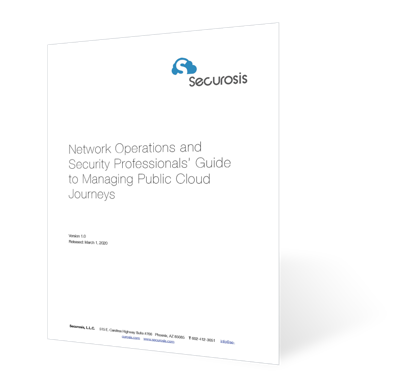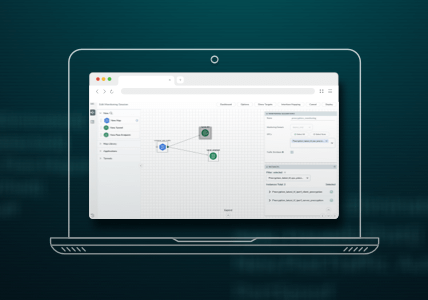What Is Hybrid Cloud? Benefits and Disadvantages
Large-scale enterprises can no longer get away with simply having on-premises systems; migrating some of the digital operation to the cloud has become a necessity. As such, the first question in this process is whether to use a public or private cloud — or both. When using both of these cloud solutions together, we get what’s called a hybrid cloud. But what is a hybrid cloud, and what are its benefits and limitations?

Public Cloud Advantages and Disadvantages
But how does a hybrid cloud compare to a public or private cloud? A public cloud involves hosting data and applications on a third-party server, which can then be accessed over the web. This public cloud then puts the responsibility on the third-party company to manage the servers and service anything that goes wrong. Of course, in many cases, your data and apps will be stored alongside others’ data on the same machine, meaning you could be more vulnerable to a security breach.
Advantages:
- Limitless scalability
- Increased reliability
- Less responsibility
Disadvantages:
- More vulnerable security
- Decreased control
Private Cloud Advantages and Disadvantages
In order to maintain security within your cloud storage, you can also invest in private cloud technology. In this case, your databases are stored on secure, individual servers. Private cloud can be managed in-house, with servers located on the premises, or it can be managed by a third party. Although private cloud is more expensive, it generally provides a more secure infrastructure. Of course, better security — keeping the servers on your premises — also means more responsibility on your end to ensure that security protocols are sound and that everything is up and running properly.
Advantages:
- More secure infrastructure
- Increased control and customization
- Greater flexibility
Disadvantages:
- More expensive
- More responsibility
Public vs. Private Cloud
While many businesses may view this as a one-or-the-other choice, it’s reasonable for large organizations to utilize both public and private cloud alongside their established on-site systems. In short, these organizations are discovering they can combine the advantages of private and public cloud options, building a single solution that marries the benefits of each while limiting the disadvantages. This is called a hybrid cloud solution.
What Is Hybrid Cloud?
A hybrid cloud combines many of the advantages of both public and private cloud systems, allowing information to be shared between on-premises systems and those maintained in the cloud. By acting as orchestration between all platforms, the hybrid cloud increases organizational flexibility. To provide a hybrid cloud example, consider remote workers who would still be able to access information located on local servers through the cloud. As companies grow in size and scope, this improved flexibility often becomes more and more essential.
This isn’t just a small trend, either. The hybrid cloud market is projected to grow to $97.6 billion by 2023.1 Demand for hybrid cloud computing has never been higher, and luckily, companies are rising to the occasion by providing top-notch service.
Hybrid Cloud Benefits
Any answer to the question “What is hybrid cloud?” must also include a rundown of hybrid cloud benefits and potential challenges. Cloud computing advantages and disadvantages come in many forms. Luckily, for many organizations, there are more advantages than disadvantages when using hybrid cloud, and these hybrid cloud benefits include:
- Cost savings
Using a hybrid cloud might be an investment upfront, but it will provide plenty of cost-saving benefits down the road. For example, businesses that use a public cloud without a hybrid might have a difficult and expensive time migrating information if they decide to make changes to their internal systems. Furthermore, because a hybrid cloud is scalable, it makes handling changes in business goals cheaper down the line. - Unique balance of control, performance, and scalability
Only hybrid cloud technology can provide a blend of benefits that come from public and private servers. With a hybrid cloud, for instance, you can enjoy the scalability of a public cloud environment without forfeiting all control to a third party. In fact, with every hybrid cloud situation being different, a unique solution will have to be applied to each hybrid system in order to fulfill specific requirements. - Speed of deployment
Because a hybrid cloud is designed around your organization’s needs, it can be optimized with speed in mind. For example, because this system isn’t entirely public, your IT staff will be able to minimize latency, which will make data transfers quicker and easier. - Business agility
The overall level of customization available for hybrid cloud also ensures your organization is agile enough to handle the needs of customers or clients. Not only does it connect old systems to new ones, but the hybrid cloud also allows businesses to create an overarching structure that meets the unique needs of a specific enterprise.
Hybrid Cloud Disadvantages
Although hybrid cloud computing may be a necessity for certain large-scale organizations, there are still some potential issues to be aware of when investing in a hybrid cloud solution. These include:
- Overly complex security
A Forrester survey2 of 1,000 chief information security officers (CISOs) revealed that managing the growing complexity of security is their number one concern. Because of the complicated nature of hybrid cloud, building effective, ongoing security is a difficult process. You should be prepared to tackle this task before loading sensitive information into your hybrid cloud. - Visibility issues
Gigamon commissioned a survey that explored security preparedness and network visibility in countries across the globe. We discovered that many IT professionals found it difficult to maintain visibility easily across a sprawling hybrid cloud. A lack of visibility can put a company at security risk.
Tackling Hybrid Cloud Challenges
Thankfully, there are ways to combat the disadvantages listed above, giving your hybrid cloud the best chance of success. Here are several approaches designed to help you achieve hybrid cloud success without lowering your network defenses.
- Encrypt your data
First, prepare against potential security breaches by encrypting your data, making it more difficult to access. - Don’t leave security to cloud vendors
Cloud vendors might make work easier, but in handing control of sensitive data/information over to a third party, you’re also putting your faith in their ability to protect that information. And unfortunately, not all third-party vendors may be up to the task of keeping your information private. Instead, ensure your people are involved in and working on a security system to ensure maximum safety for your hybrid cloud framework. - Determine which apps, data, and workloads are appropriate for each cloud type
Data should be stored strategically within your hybrid cloud network. Sensitive information should be kept on-site or in a private cloud, while other, less valuable data can be stored in the public cloud. - Utilize a container orchestration platform
An effective container orchestration platform, such as Kubernetes, will help you deploy your apps across cloud environments. - Use automation where possible
Automation can increase the speed of information, making it easier to react to a security threat quickly, and can provide consistency across multiple platforms. This saves time in managing the system. - Invest in a cloud-visibility tool
Increased visibility allows for increased security. By investing in a cloud-visibility tool, your IT crew will be able to spend their time focusing on other equally important tasks.
What is hybrid cloud? In short, a hybrid cloud is a cost-effective way to connect your various data systems while balancing your needs. Although building and integrating a hybrid cloud is complex and can be potentially time-consuming, often the potential rewards more than compensate for the difficult learning curve. Visit Gigamon to learn more about what we can do for your network.
Further Reading:
- “What Is a Private Cloud? Your Data with a Room of Its Own”
- “Your Cloud Journey and the New Tomorrow” Webinar
- “What Is Cloud Security?”
- “If You Don’t Have Container Visibility, Your Organization Is at Risk”
- “Assure Cloud Security and Compliance“
- “Accelerate Cloud Migration”
References
- Forrester Consulting. “Center Security on Advanced Technology: How a Technology-Led Strategy Helps CISOs Successfully Secure Their Organizations. July 2017.” Commissioned by Fortinet. https://www.fortinet.com/content/dam/fortinet/assets/analyst-reports/Center-Security-On-Advanced-Technology.pdf.
- MarketsandMarkets. “Hybrid Cloud Market Worth $97.6 Billion by 2023.” MarketsandMarkets.com. https://www.marketsandmarkets.com/PressReleases/hybrid-cloud.asp.
Featured Webinars
Hear from our experts on the latest trends and best practices to optimize your network visibility and analysis.

CONTINUE THE DISCUSSION
People are talking about this in the Gigamon Community’s Hybrid/Public Cloud group.
Share your thoughts today








 Dan Daniels
Dan Daniels